Planet Word: Experience the First Voice-Activated Museum

Museums are fundamental to our culture, and I generally have an open mind about which ones I visit. However, the Planet Word Museum in D.C. stood out as one of the most unique learning experiences I've encountered (and definitely a standout in the DC area!). Below, I’ll dig into some of the most immersive exhibits at Planet Word and share my takeaways to help you plan your visit.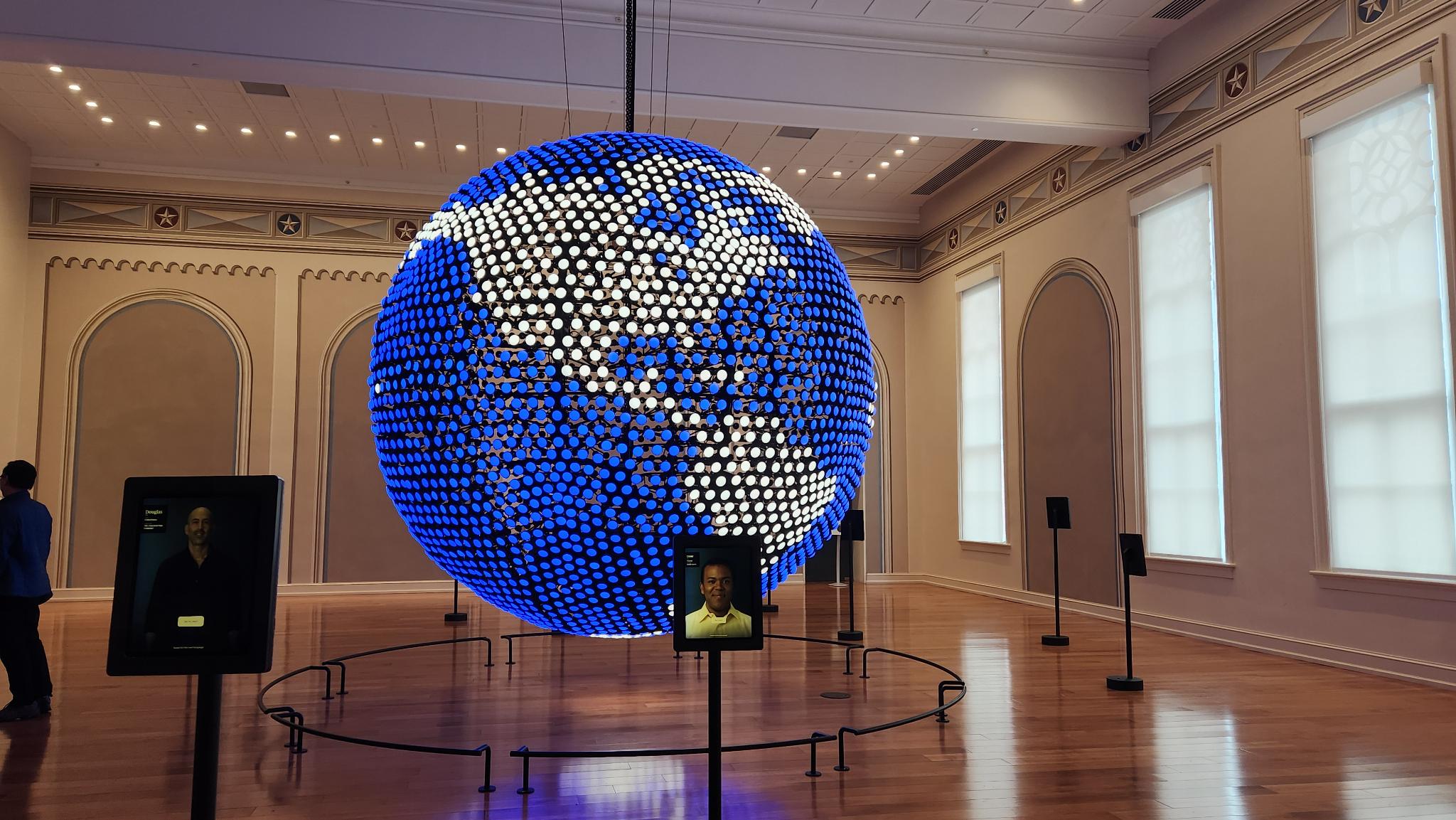
Planet Word: What to Know Before Visiting
Planet Word is located at the historic Franklin School at 925 13th Street NW in the heart of Washington DC. It's accessible via Metro (nearby stations are Metro Center and McPherson Square) and it’s an easy walk from other popular attractions like Ford’s Theatre, The Smithsonian, and the White House. I was able to do Planet Word and much of the Smithsonian Natural History Museum in about half a day. Admission is free, though a donation is certainly a great way to show your support. The museum offers a number of special events, workshops, and other public programming often, so make sure to check this out before you plan your visit.
Immersive Exhibits at Planet Word DC
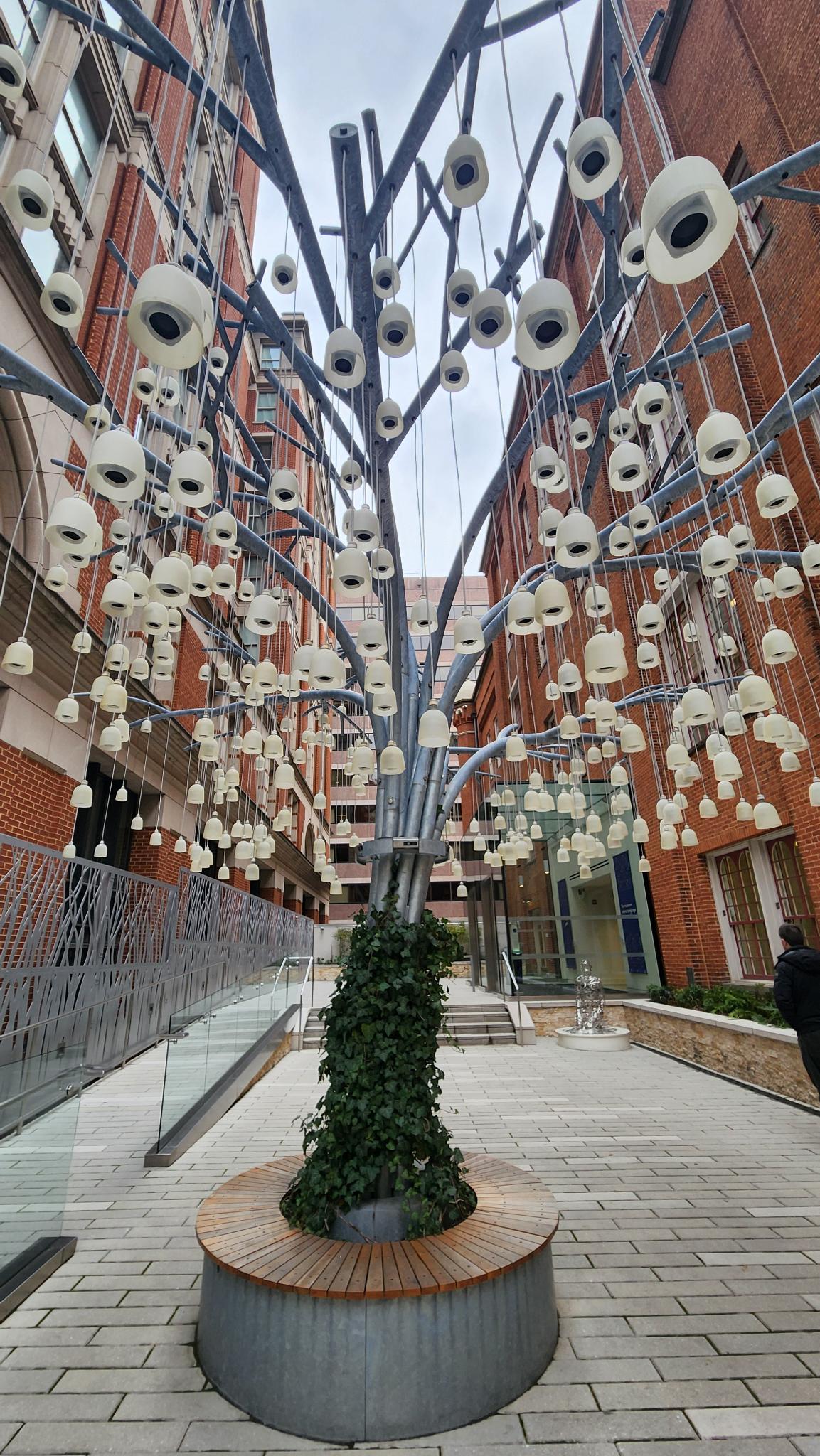
The Speaking Willow
I was first drawn to Planet Word when I learned about their Speaking Willow outdoor exhibit. Speaking Willow is a huge digital tree that gently speaks to you in multiple languages. It’s super subtle, and if I didn’t know enough to stay put and wait for the words to start, I might have mistook it for just an eye-catching sculpture. As you wander beneath the tree's branches, your movement triggers a total of 280 recordings from bell-shaped speakers, collectively representing the native languages of over 99% of the world's population.
The artist responsible for the Speaking Willow is Rafael Lozano-Hemmer, a Mexican-Canadian creator of public, electronic installations who also happens to be trilingual. He specializes in projects that transform aspects of the human experience into monumental displays of light, sound, and even robotics.
Speaking Willow’s synchronized display of light and language evokes the concept behind the photophone, which was the pioneering gadget that transmitted the human voice using a beam of light. It served as a forerunner to the modern wireless communication technologies we use today. According to Planet Word’s website, the art piece is made up of an “aluminum sculpture, custom-made speakers and electronics, LED lights, computer, patch bays, 364 unique language recordings on micro-SD cards, 3D cameras, and 3.6 miles (5.8 km) of Ethernet cable.”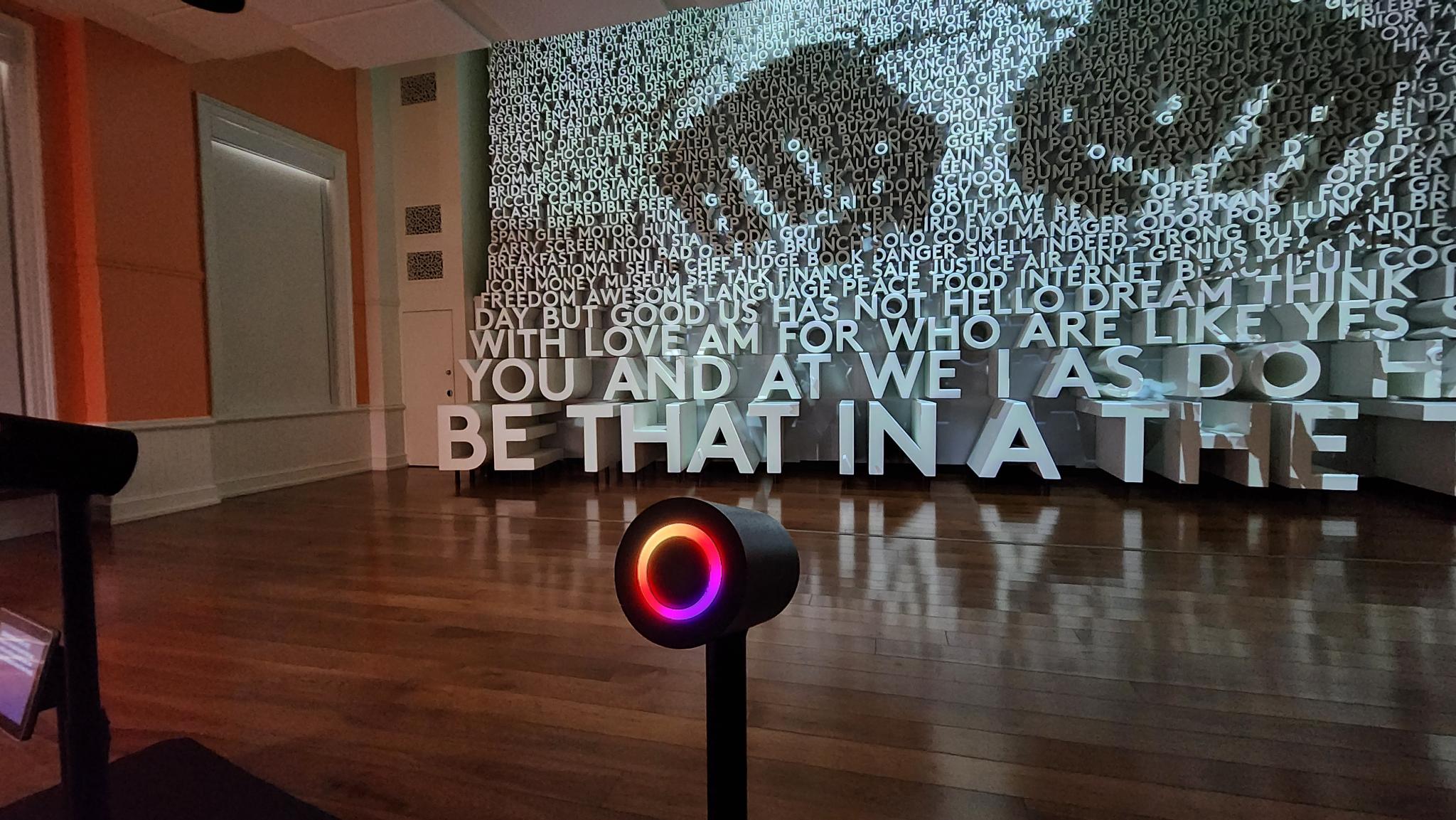
"Where Do Words Come From?"
After you enter the building, if you can resist the beckoning gift shop, go up the stairs to the top floor. This is the suggested route by the Planet Word staff, and it sets you up for an impressive journey through multiple rooms and experiences. The exhibit “Where Do Words Come From?” is located in a spacious room fully equipped with projectors and Alexa-powered microphones. The presentation is projected onto a 3D wall of letters, with lights and colors calling attention to specific words as they’re highlighted. The story begins with the origins of our present-day languages and how they have evolved and borrowed from each other over centuries.
As you take in the educational show, the narrator will call on the audience to speak into the mics and call out words to answer questions or prompt the next stage of the story. I’ll note the speakers are not perfect, and we often had to repeat our guesses and raise our voice more than seemed appropriate in the sterile-yet-high-tech environment. We visited on a slow day, so we were able to really interact with the exhibit and take advantage of steering the experience whatever way we preferred. For those who might get antsy sitting and listening, this exhibit also has a separate one-on-one language quiz with headphones that teaches you more about what makes up the words we speak each day.
The Spoken World
Moving from one large room to an even bigger one (the Great Hall, to be exact), “The Spoken World” exhibit is immediately an eye-catcher due to the massive LED globe in the center. It’s 12-feet tall, and while it serves as the room’s centerpiece during exhibit hours, for night events it can be raised to the top of the 22-foot ceilings and retracted into a chandelier. The globe is circled by multiple tablets on stands, featuring the faces of speakers ready to tell their languages’ story. The faces are real and alive, and as I walked around the room I felt eager to talk to them just as I would if they were there in the flesh. I think I did “talk” to most of the tablets, and though I’d never really thought about the Miriwoong language of Australia, David taught me some essential words and aspects of his culture. (Check out the video above!) Visitors can walk up to a tablet and respond to the prompts to repeat certain words and phrases in multiple languages.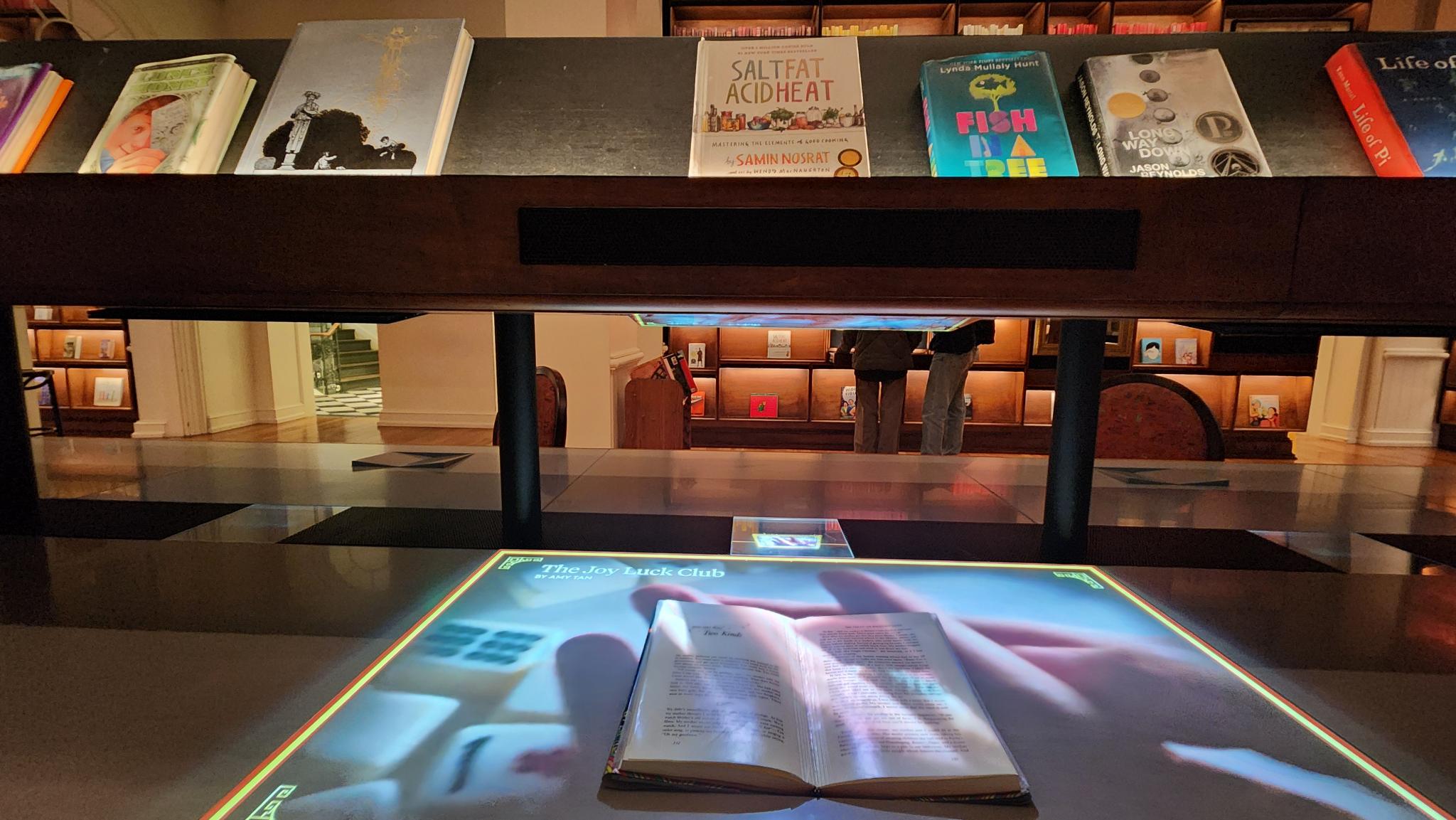
The Library
The Library was my favorite exhibit in the entire museum. As you walk in, you feel like you’re entering Belle’s library from Disney's The Beauty and the Beast, and not unlike the objects from the movie, many of the books will speak to you. Well… sort of. You have to place them just so on an interactive table and the pages are read aloud, sometimes by the actual author. There are a number of classics from all different genres to choose from, including The Joy Luck Club by Amy Tan, Fish in a Tree by Lynda Mullaly Hunt, and Salt Fat Acid Heat by Samin Nosrat. I enjoyed that a digital experience could still embody all the things we love about physical libraries: mahogany shelves, musty volumes, and thick comfy chairs for getting lost in a good read.
The true must-see in the Library of Planet Word are the voice-activated story windows (at least, that is what I’m calling them!) They appear to be mirrors on the walls with a small plaque beneath them, engraved with a phrase. When you walk up to the mirrors and speak the phrase, the mirror transforms into an illuminated picture or a diorama-like world representing a particular story (it's tough to explain -see my demonstration in the video above!). As a lover of puppets and animation, the dioramas reminded me of taking a peek into a stop-motion set. One of the frames had James and the Giant Peach meets Coraline vibes, with animals, bugs, and a king all sharing a delicious meal. This was by far my favorite part of the visit, as the voice-activation paired with the craftsmanship of the mini world made it really feel magic. it’s easy to miss, so make a note!
Planet Word: Is it worth a trip?
So, should you schedule this into your itinerary on your next trip to DC? I say, “absolutely!” There are a number of rooms I didn’t review here, notably the very loud Karaoke room that I steered clear of (but I saw kids and adults loving) and the humor exhibit which is all about the language of joke-telling. I’d say the museum’s sweet spot is middle-school aged kids up to adults (the website says ages 10 and up), but I could see my toddler enjoying the Library and the music-related exhibits as well. I also have to mention that in addition to the cool gift shop, there is a photo booth that presents a word on the screen right before the photo is taken. The goal is to make a face that represents that word (or just opt for a smile), and you get two free photo booth pictures as a souvenir. 📸
If you're interested in learning more about Planet Word, check out our webinar "Inside Look: Planet Word" where we hear from the AV Systems Programmer and Designer behind the museum!
FAQ:
What is Planet Word?
Planet Word is an immersive language experience in Washington DC and the first voice-activated museum in the world. There are many interactive exhibits that range from the origins of language to how we use words in books, music, and comedy.
How much does it cost to go to Planet Word?
Admission is free, though donations are appreciated.
How long does it take to go through Planet Word?
The museum recommends at least 90 minutes to get through everything, and I’d even give two hours or more if you really want to get lost in some of the exhibits. There's also a restaurant called Immigrant Food, located on the lower level of the building, if you or the kids need some brain food.
Recommended Content
AV for Sports Industry in India with Cricket Prospective



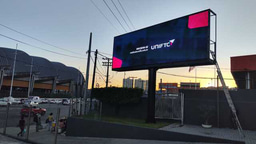


Please sign in or register for FREE
If you are a registered user on AVIXA Xchange, please sign in